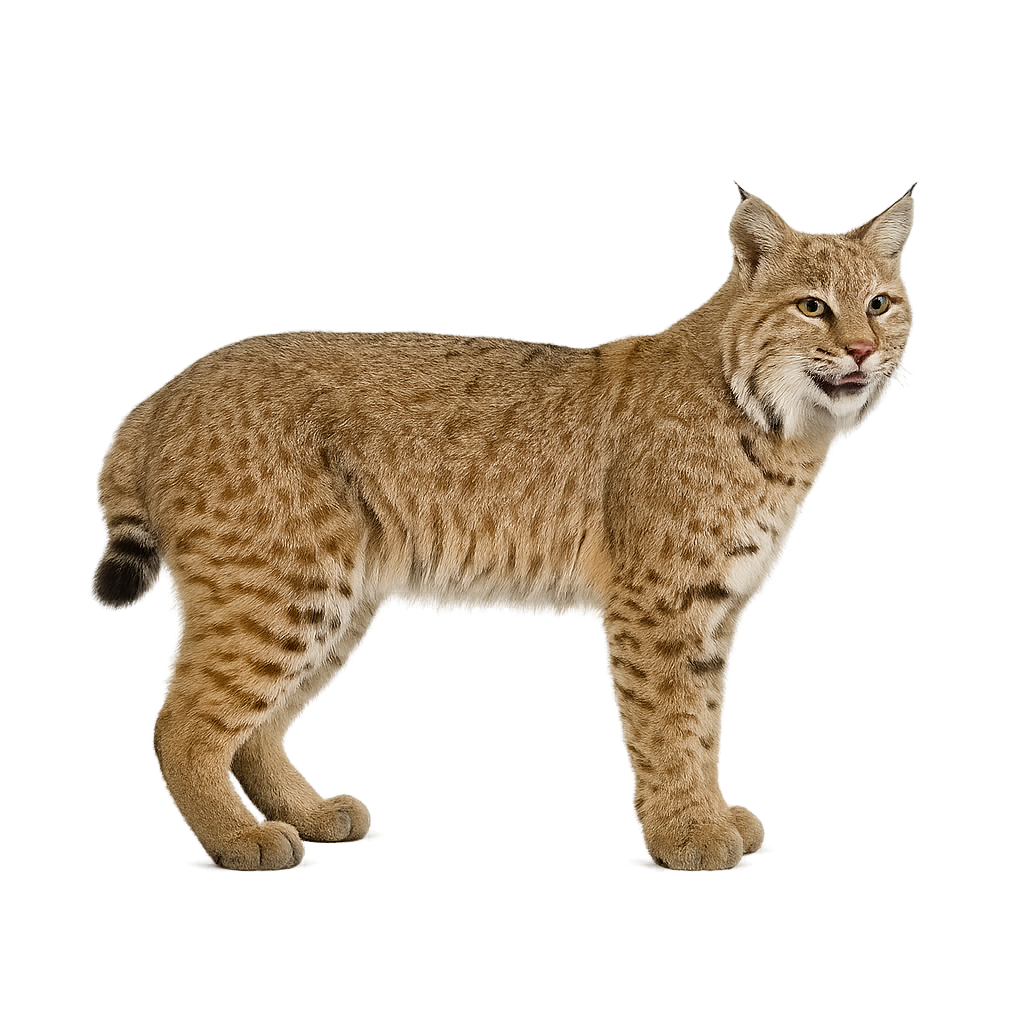Your wildlife photography guide.
Explore the bobcat in detail, study its behavior, prepare your shots.
Where to observe and photograph the bobcat in the wild
Learn where and when to spot the bobcat in the wild, how to identify the species based on distinctive features, and what natural environments it inhabits. The WildlifePhotographer app offers tailored photography tips that reflect the bobcat’s behavior, helping you capture better wildlife images. Explore the full species profile for key information including description, habitat, active periods, and approach techniques.
Bobcat
Scientific name: Lynx rufus

IUCN Status: Least Concern
Family: FELIDAE
Group: Mammals
Sensitivity to human approach: Very shy
Minimum approach distance: 30 m
Rut period: January to March
Gestation: 60-70 jours
Births: March to June
Habitat:
Varied habitats: deserts, forests, and mountains
Activity period :
Mainly active at night, generally discreet during the day.
Identification and description:
The Bobcat is a medium-sized cat native to North America, where it is widespread, particularly in the United States, Canada, and Mexico. It measures about 80 to 110 cm in length, with a short tail of 10 to 15 cm, and weighs between 8 and 14 kg, although some males can reach 20 kg. Its coat is typically tawny or grayish with dark spots, and it has black tufts of fur on its ears, a characteristic feature of this species. The Bobcat is an excellent solitary hunter, primarily feeding on hares, rabbits, as well as birds and small mammals. It is particularly known for its ability to hunt in a variety of environments, ranging from dense forests to more open regions. This predator uses its great stealth to approach its prey before launching a quick attack. While the Bobcat remains relatively stable in terms of population, it is threatened by habitat loss and illegal hunting in some areas.
Recommended lens:
400 mm – adjust based on distance, desired framing (portrait or habitat), and approach conditions.
Photography tips:
Approach slowly and discreetly, using a telephoto lens to avoid disturbing the Bobcat, a discreet predator that can easily move away if disturbed.
Photograph early in the morning or late in the afternoon, when the light is soft and the Bobcat is more active, often hunting for prey such as hares or birds in forests, meadows, or rocky areas.
Capture moments of natural behavior: The Bobcat is an excellent hunter and climber, often observed stalking its prey or resting in trees. Wait for moments when it is moving or engaged in its natural behavior.
Be patient and respectful: The Bobcat can be difficult to spot due to its stealth. Wait for it to become more visible without disturbing its activity.
The Bobcat is a species of least concern, but it is important to respect its natural environment. Do not disturb its hunting habits or resting areas, and follow local conservation regulations to protect this species.
The WildlifePhotographer App is coming soon!
Be the first to explore the best nature spots, track rutting seasons, log your observations, and observe more wildlife.
Already 1 439 wildlife lovers subscribed worldwide

